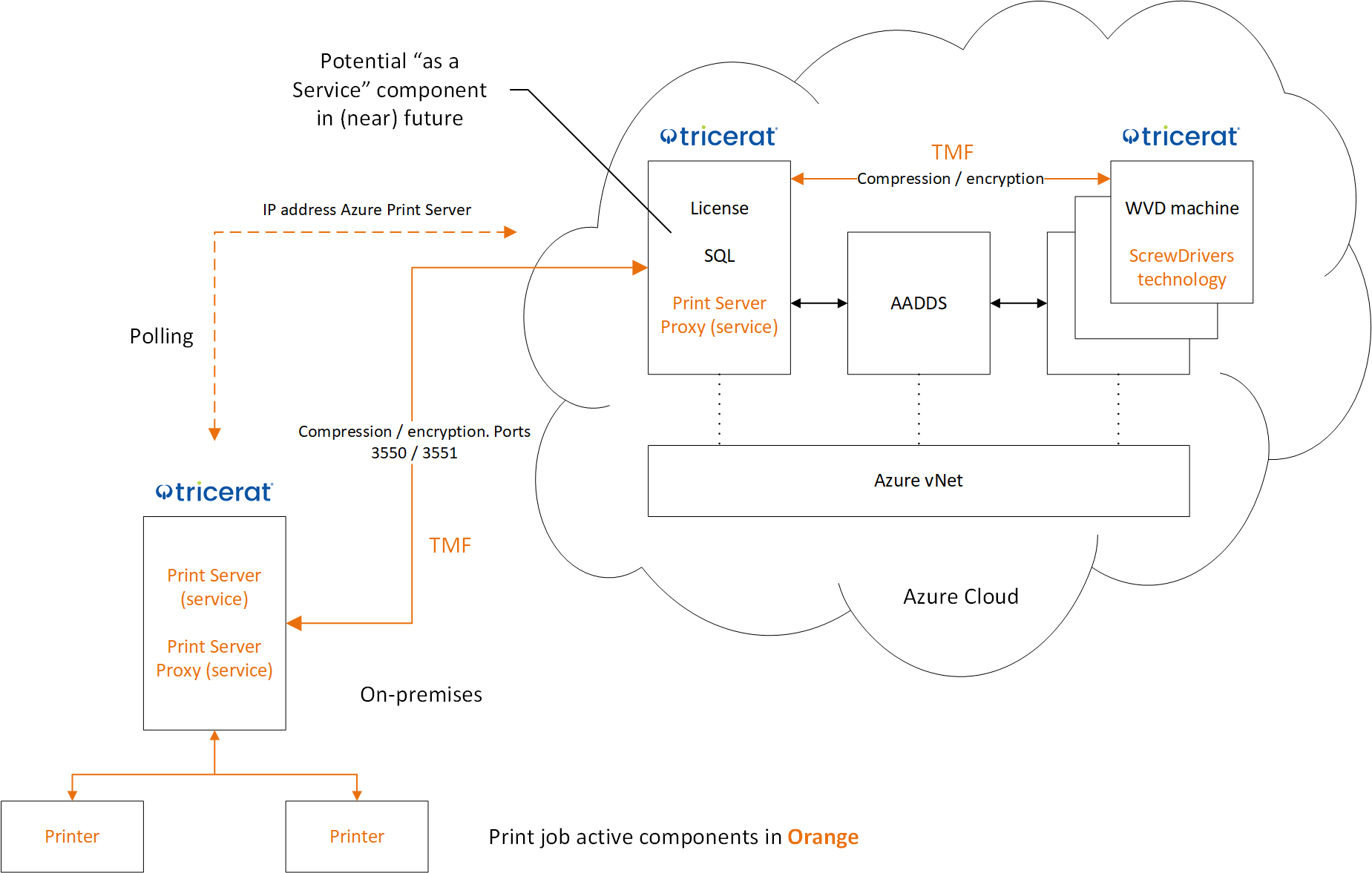A couple of months ago, in June I wrote about some of the benefits that Tricerat brings to the table when printing from remote, or Cloud-based virtual environments, which, of course, applies to WVD as well. Now that Windows Virtual Desktop has gone GA I thought I’d talk a bit more on how this works from a technical point of view.
RDS printing
As you might know, Microsoft offers a standard RDS printing solution named Easy Print. While this will work OK for smaller on-premises environments, for example, when it comes to Cloud, or remote based environments some important capabilities, like network printer support, traffic compression and encryption are missing. It being a “Universal” solution, also means that more advanced printing features won’t be available. This is where Tricerat comes in.
News update: Tricerat is now an official Microsoft WVD partner! Go here for more information.
Print Proxy
The main product for today is Tricerat’s Print Server Proxy solution, which got introduced in January of 2018. This, together with the Simplify Printing Suite and Tricerat’s ScrewDriver technology makes a killer combination. And by the way, we’re talking about WVD solutions here, but it will work from any other remote (or local) type of environment as well.
Many companies, trying out Cloud, for example, have to deal with Cloud, other types of remote sites, as well as existing on-premises environments. Tricerat enables you to manage all of these deployments, including the accompanying infrastructure (print devices and servers) from a single console.
You might remember the below image, or something similar. I’ve added some more details.

It shows how your on-premises printing environment is connected to the WVD Azure tenant, and vice versa. The Print Server Proxy component is an important one, obviously. There will be two separate services “living” on the on-premises print server, the Print Server Proxy Service and the “normal” Print Server Service known to most of you, I’m sure (multiple “horror” stories come to mind).
With this setup, using Tricerat’s Print Server Proxy, that is, there will be no need to extend your vNet, or to use/configure a VPN solution. From a firewall perspective, you’ll be good to go with ports 3550 and 3551.
From on-prem to Azure
The on-premises Print Server will point to the IP address of the Print Server Proxy Service on the Print Server up in Azure. This will be an IaaS based machine also housing the SQL database (needed for the ScrewDriver technology) and licenses, which will take you roughly 15 to 20 minutes to set up. Which, by the way, might be turned into a fully automated “as a Service” offering in the (near) future.
The on-premises Print Server will poll the Azure-based Print Server on a regular basis, establishing a continues connection from on-prem to Azure. Each WVD machine will have the Tricerat ScrewDrivers bits installed, which will (partly) take care of the actual printing process once initiated by the user, in short, this is what will happen (follow the orange lines/text in the image).
- A user clicks print from within an application
- The locally installed ScrewDriver technology will build a virtual printer local to the WVD machine.
- A print job will be created and turned into Tricerat’s own TMF format. The proprietary TriMeta Format (TMF) is engineered specifically for virtual driver technology and remote desktop (DaaS) or VDI scenarios, enabling compression and encryption to all print traffic that travels the wire.
- Next, the job will be forwarded to the Azure Print Server housing the Print Server Proxy Service, compressed and encrypted.
- From there it will be sent over to the on-premises Print Server/Print Server Proxy Service where it will be rendered into a format/language the print device understands. Again, compression and encryption will be applied.
- Finally, the print job will end up at the print device. At this time traffic will only traverse the local network where encryption and compression will be less relevant.
This is how Tricerat bridges the gap between remote (Cloud) locations, like your WVD tenant and your local Print architecture set up. If you would like to know more or perhaps give it a go yourself go here or here, they’ll be more than happy to help you out.
Happy printing.











